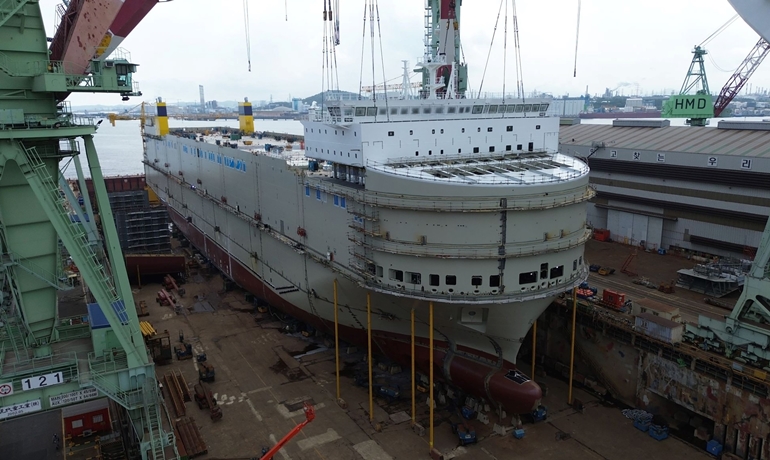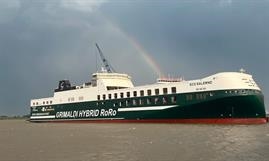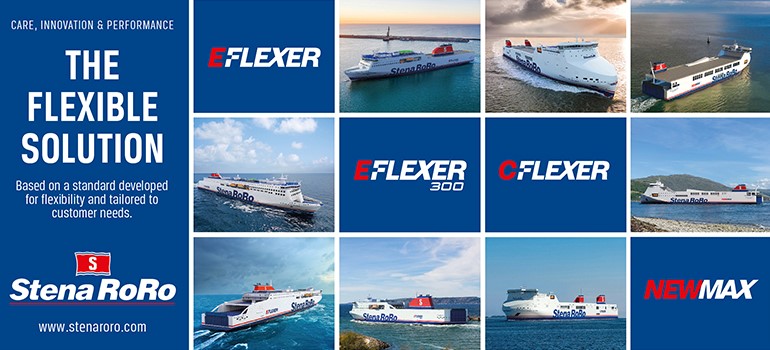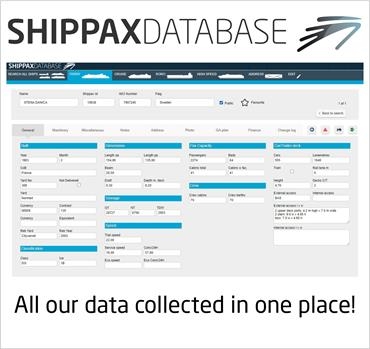
The first ship in the new G9e class is about to be floated out © Hyundai Mipo
CLdN claim CO2 efficiency leadership
Ro-roCLdN published its fleet emission data for 2023. CLdN’s weighted average fleet emissions were 39g CO2/tonne-km. CLdN claim this is 19% better than their next-best performing short sea competitor (1) and more than twice as efficient as road transport by heavy goods vehicle (2). This directly benefits all CLdN customers and the supply chains they serve by reducing the scope 3 emissions of their cargo.
To reduce fuel consumption and emissions, CLdN has been investing in new, larger, more fuel-efficient ro-ro ships and in eco-upgrades of its existing vessels. CLdN has invested some EUR 750 million in new ro-ro ships over the past decade. The result is that CLdN operates more than 30 technologically advanced ships with an average vessel age of 11.5 years compared to a peer group (3) average fleet age of 16.5 years.
These recent investments, combined with a daily focus on fuel consumption reduction in its operations, have led to consistent improvement in the carbon efficiency performance of CLdN’s fleet as reported in the European Commission’s Monitoring, Reporting and Verification (EU-MRV) platform. This enables a comparison of the Energy Efficiency Operational Indicator (EEOI) (4) of each ship as calculated in CO2 emissions for the transport work done in tonne-kilometres.
Commenting on the performance, CLdN CEO Florent Maes said: “We are proud of our leadership in carbon efficiency, and we will continue to drive reductions in the carbon intensity of our shipping and port activities. CLdN's efforts are an outlier in a sector where many competitors demonstrate either no evidence of carbon efficiency improvements or implement largely cosmetic measures with limited impact. In 2025, we will take delivery of the two new 8,000 lane metre vessels that are currently under construction in South Korea. Compared with our largest vessels currently in operation (CELINE and DELPHINE), the new ships will further reduce CO2 emission intensity by 40% while having the same cargo capacity.”
1. DFDS (based on end of year fleet as disclosed in Annual Report and submitted MRV data)
2. Average as per GHG Protocol - Road vehicle - HGV Articulated - Engine size > 33 tonne : 87g CO2/ t-km
3. Ro-ro freight operators in Northwest Europe: DFDS, Stena Line, Finnlines. Efficiency data for P&O Ferries and Irish Ferries was not currently available.
4. EEOI is a metric used to assess a vessel's fuel efficiency during its operations, in turn providing the best measure of how effectively a ship converts fuel into propulsion and transport.
© Shippax
Sep 22 2024
Most read
Uber Boat by Thames Clippers announced the UK's first fully electric cross-river passenger ferry
Dec 07 2024






















